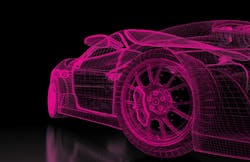June 30, 2021—An estimated 1 in 3 people is susceptible to motion sickness, particularly in moving vehicles. Most people know that it can be most acute in passengers rather than the driver.
So what if everyone in the vehicle is a passenger?
That's a real issue that autonomous vehicle developers hope to solve, or at least alleviate. If those companies envision a future of self-driving transportation, their business models depend on passengers holding down their lunches while getting from A to B.
Researchers and vehicle developers are looking at this issue in some interesting ways. Take a look at some of the work being done.
Volvo: Perception is Wellness
For many people, being in the driver's seat is less likely to cause car sickness because you have some control over how the vehicle is moving. According to researchers at Volvo, this allows drivers to adjust their body postures and prepare their brains for vehicle movement.
Of course, riders in an AV don't have that benefit of foresight. But the company is experimenting with cues to give passengers a heads up, according to a Wall Street Journal report. These include audio cues that simulate engine noise about a second before the vehicle takes a turn or accelerates.
Hard data didn't make it into the article, but it notes that passengers in trials felt less sick when hearing the audio cues.
Jaguar: What's Your Wellness Score?
Jaguar Land Rover is looking into the creation of a wellness score that can be a part of the self-driving software in its autonomous vehicles. When implemented correctly, the score can help reduce car sickness by 60 percent, according to Car and Driver.
The company studied 200,000 test miles (simulated and actual) to try and learn about the vehicle dynamics that cause sickness. The score takes that data and reflects how likely a given on-road situation will make someone nauseous.
By linking that system into the self-driving software, the idea is that the computer can adjust to achieve the best wellness score to be least likely to cause sickness.
About the Author
FenderBender Staff Reporters
The FenderBender staff reporters have nearly four decades of combined journalism and collision repair experience.
